
One of the favorite methods of medieval icon painting – multi-rowing – is associated, to some extent, with monthly icons. He retained his importance at a later time.
In this case, an arbitrary, it would seem, connection of the depicted saints and evangelical scenes in several rows has a deep significance, its orderliness: it is most likely the memory of family holidays, name days, important dates.
Resurrection of Christ – Descent into hell flanked by the most revered in the people images of Our Lady of Kazan and St. Nicholas, bears the main semantic load. The saints and the two “scenes” in the next two series are clearly protective.
This iconographic scheme proved to be very stable in folk icon painting. Preserved icons of the XVIII-XIX centuries. testify to the connection of practical national interests with the stability of veneration of saints – protectors of peasant life.
The sketch style of the icon is close to the traditional primitives of the Russian North. Belated echoes of artistic language of the XVIII century. declare themselves in the “smiling” form of the Mother of God and bright, full of color contrasts.
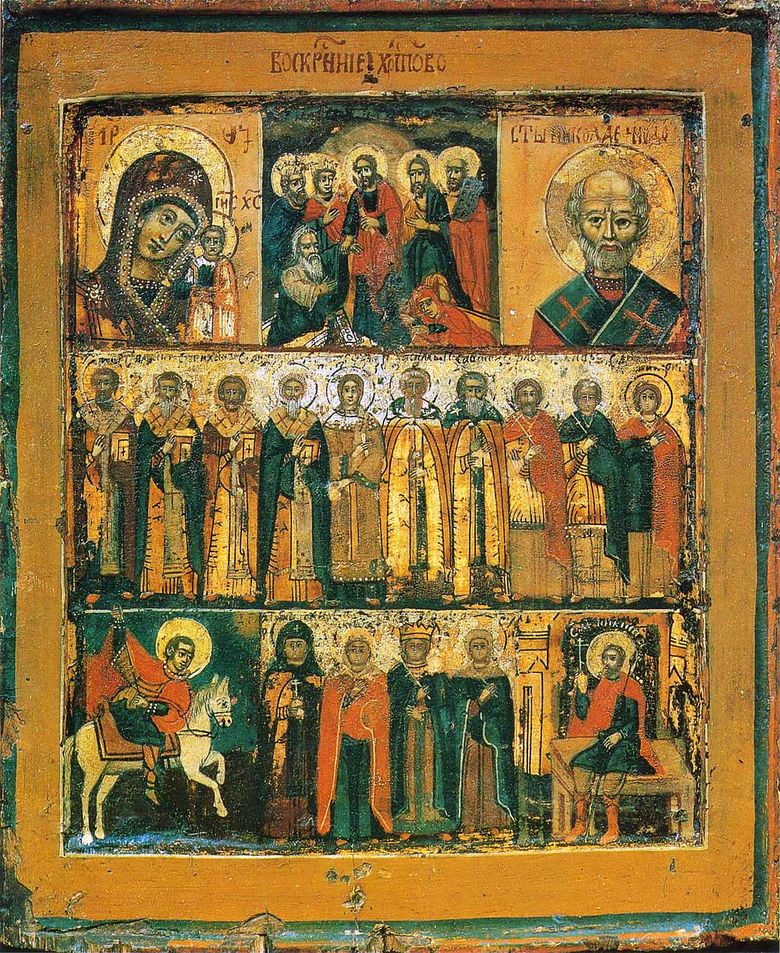 La résurrection du Christ avec des saints sélectionnés
La résurrection du Christ avec des saints sélectionnés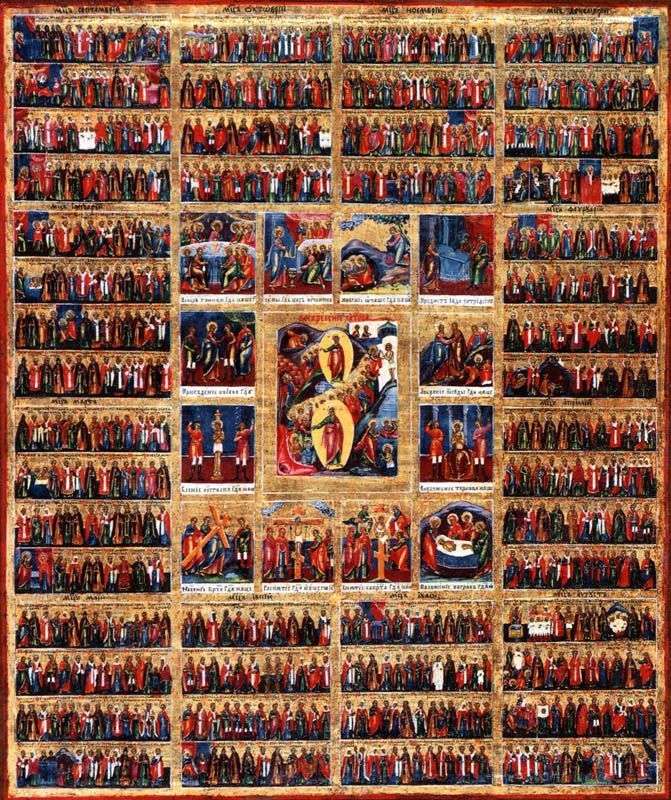 The Resurrection of Christ, with the Passion Cycle and the Annual Mine
The Resurrection of Christ, with the Passion Cycle and the Annual Mine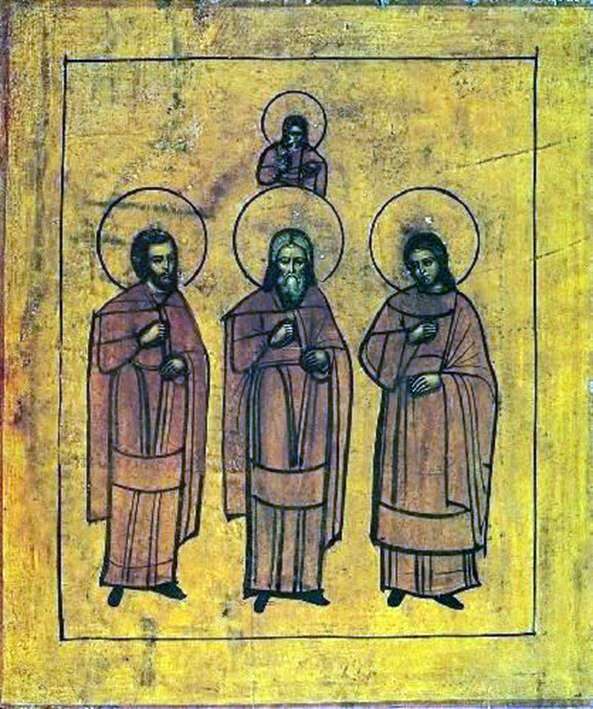 Saints Guriy, Samon and Aviv
Saints Guriy, Samon and Aviv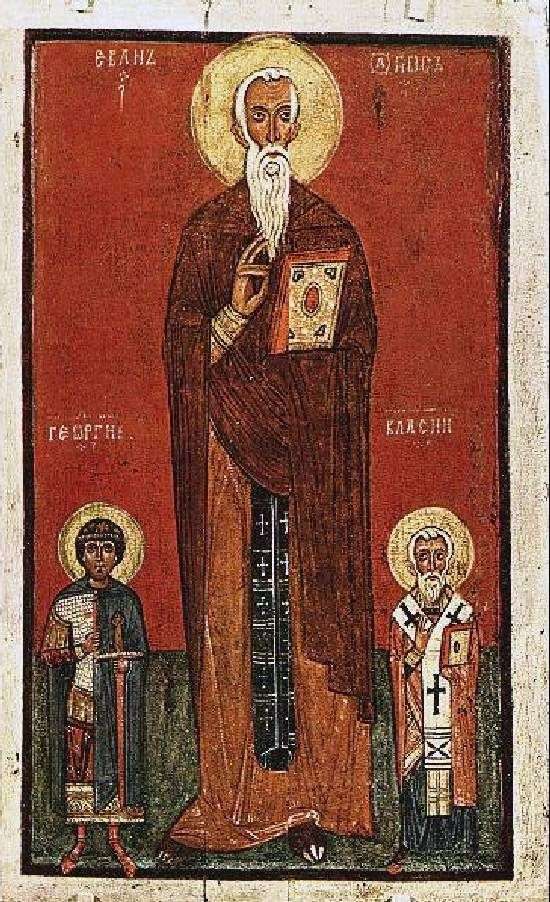 Saints John Climacus, George, Vlasy
Saints John Climacus, George, Vlasy The Mother of God &; “Quench My Sorrows”, with the four saints on the fields
The Mother of God &; “Quench My Sorrows”, with the four saints on the fields Resurrection of Christ with the Feasts and Passion of Christ
Resurrection of Christ with the Feasts and Passion of Christ Resurrection of Christ
Resurrection of Christ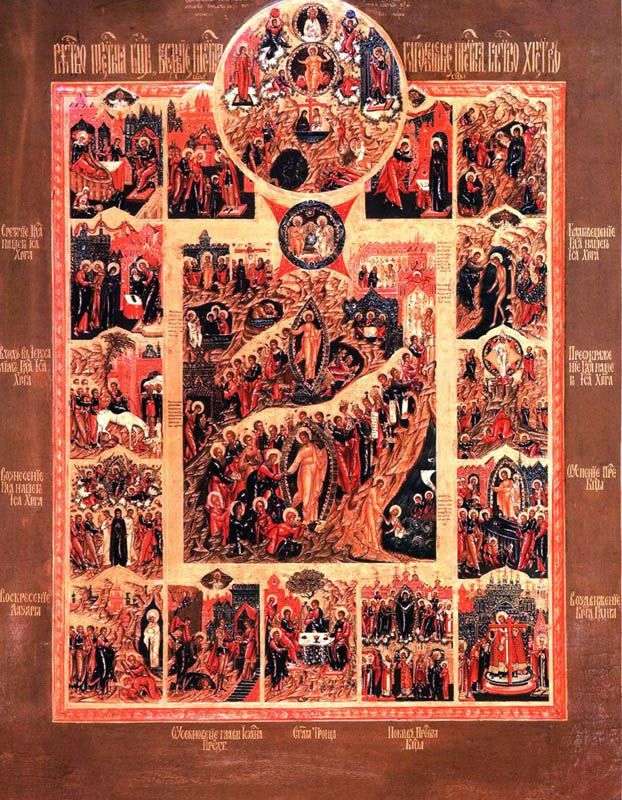 The Resurrection of Christ, with the stage of the Only Begotten Son and with holidays in 12 hallmarks
The Resurrection of Christ, with the stage of the Only Begotten Son and with holidays in 12 hallmarks